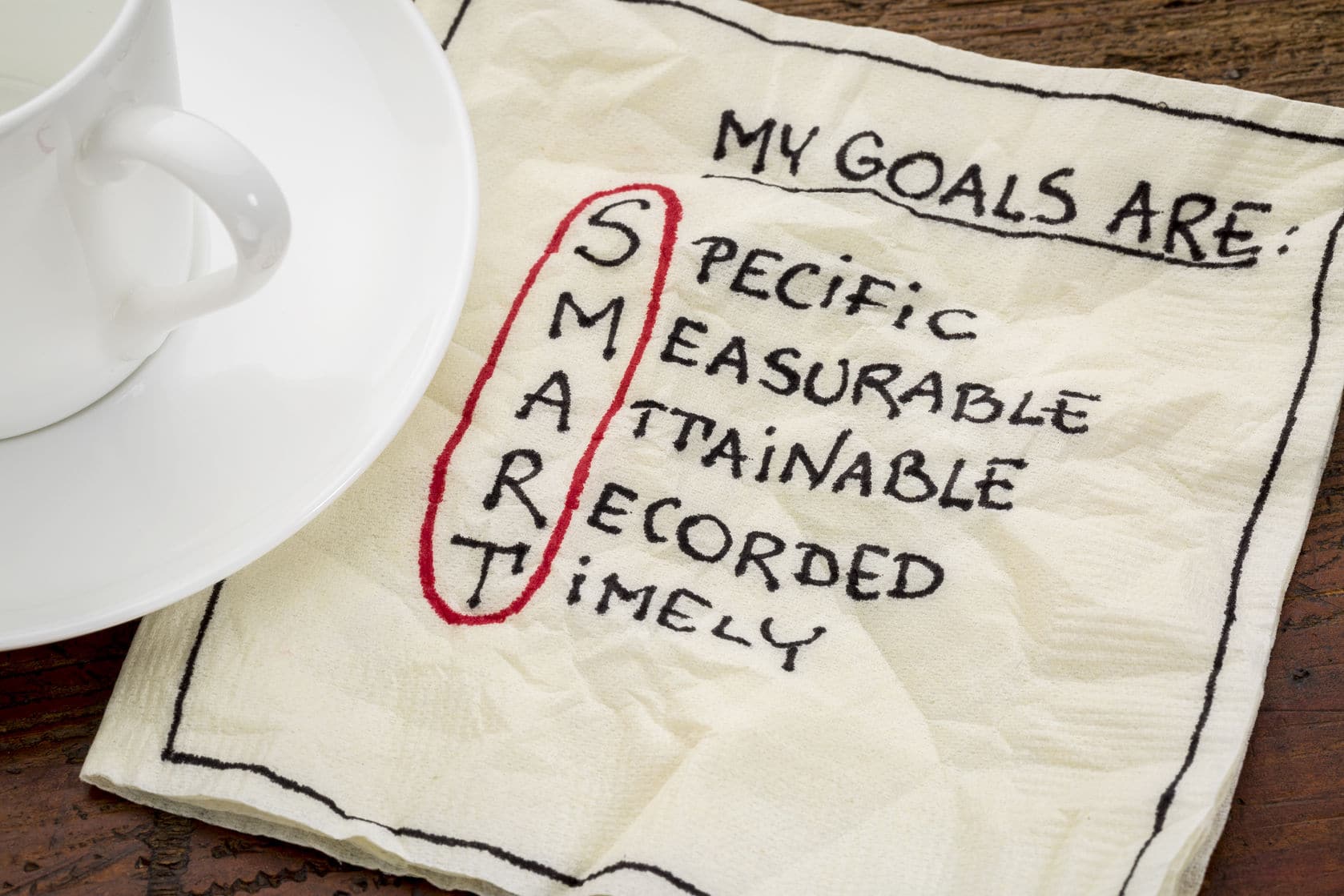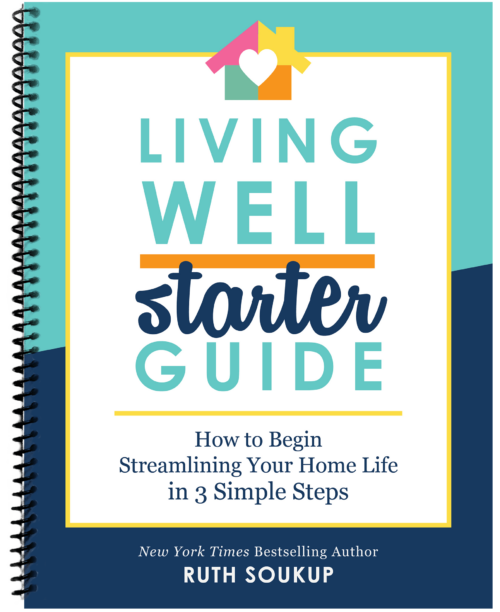
Ready to conquer your savings goals this year? Is getting a handle on your finances your number one resolution?
Many of us are trying to organize our budgets. We may be saving up for a down payment on a home, a major purchase or even retirement. Yet, as the months go by, our savings accounts seem like they’re on hold. Even if we’re tucking a little away each month, it may feel like progress is SO slow!
If you’re ready to see real progress in your savings and get a financial boost as you move into the New Year, know that it IS possible to see huge progress over the course of the next year. You simply need a plan, a goal and a shift into the right mindset.
When we focus on the big financial picture and aim high we can meet and even exceed our goals. The idea is not to sell yourself short. Don’t settle for wimpy, easy savings goals. Aim for big gains and progress to see a real difference.
Hitting all your savings goals this year is possible. Follow these steps to boost your savings and kick off your resolution now!

1. Clean Up Your Budget
If you want to see financial progress, you need a strong budget. Your budget is your road map and guide on your financial journey. At a quick glance, your budget should tell you exactly where you are, what you should put away this month and if you’re on track.
In our Living Well Planner®, we’ve included a great budget system to help you monitor and track your financial progress each month. The most important part of your budget is updating and monitoring it regularly. Keep it in an easily accessible spot.
If your budget isn’t updated or if your finances are on autopilot, it’s time to tackle them and get your money organized. Your money will only work for you if it’s closely monitored and you know exactly what parameters you’re working with. If you want to experience huge progress this year, start with a clean, well-organized budget and a system to track your income and spending as you go forward.
2. Negotiate Your Bills
When you examine and set your budget, keep a close eye on your fixed expenses—this means monthly bills like your cable, internet, cell phone, insurance and even utilities. We often think these expenses are hard numbers that can’t change, but many times a simple phone call will reduce our rates and get us a better deal.
Now I know calling to ask for a better rate is a little intimidating. There are companies out there who will negotiate better rates for you (and keep a percentage of the savings). If you’re truly struggling to call, consider using one of the services like BillCutterz. That said, if you place the call yourself, you will retain all the savings.
Keep in mind, many companies like insurance agencies and telecommunication providers are used to customers calling. It’s part of their job to discuss better rates and services with their customers. They want to keep you happy. Don’t feel afraid to call and ask for a better deal. If you notice late fees and service charges on your bank or credit card, it’s a good time to call as well. Many institutions will waive a one-time late fee or service charge for a customer in good standing. Just ask!

3. Set Monthly & Quarterly SMART Goals
Break your savings goals into quarterly and even monthly SMART goals. Look at the full picture (your end-of-year target) and work backwards. How much do you need to tuck away each month to hit your mark?
Break down your targets into the smallest possible time frame. Even if you put away $20/week, over the course of a year you will save up over $1,000! When you break your goals down into small, bite-sized portions you can quickly reroute if you start to veer off track as well. It’s much easier to make up $20 in a week than $80 in a month.
Your goals should follow the SMART goal format. We’ve outlined an easy plan to crush your goals in our (FREE) goal setting workbook. Use the goal setting formula to tackle any goal—financial, fitness or personal. The great aspect of the SMART goal setting formula is it works for any type of goal. So get ready for success!
4. Start Meal Planning
Wondering what meal planning has to do with savings? Lots! One of our biggest spending areas in our budget is often food and groceries. If you’ve laid out and organized your budget, you’re probably amazed at how much your family spends on food. (I know I was when I first started budgeting.) The average American spends about 6% of their budget on groceries, which seems reasonable, BUT they also spend another 5% on eating out. Many of us spend far more than that!
What would you do with an extra 5% in your budget? For many of us, it would have a huge impact on our ability to save. 5% over the course of a year adds up to thousands!
If you want to cut your spending on food and eat at home more often, the secret is to embrace meal planning. When dinner is simmering away in a crockpot and requires little to no prep on weeknights, it’s a no-brainer! You don’t need to worry about what to eat or cave to the call of fast food. Meal planning allows you to prepare foods on the weekends, know your menu at a glance, save money at the grocery store and waste less food.

5. Return Holiday Gifts
Following the holidays, many of us are left with plenty of items we don’t necessarily want or need. A reader once shared instead of keeping the die-cutting machine she’d wanted on her Christmas list, she decided she wanted to hit her emergency savings fund goal more. After deliberation she returned the gift and put the money in her emergency fund! Talk about inspiring!
Now, of course you shouldn’t feel guilty about gifts you want to keep, but we may get so wrapped up in the presents and “stuff” of the season we forget to take a step back to ask ourselves if we really need all the items we received.
It’s a great time to trade in gift cards you might not necessarily want or trade them online for more practical cards to use toward line items in your budget. Prioritize your needs versus wants.
6. Organize and Purge
Organizing your home will give you plenty of opportunity to discover items you don’t necessarily need or want. Give those items a new home and free up cash for your savings account in the process!
Go through each room of your home (follow the step by step plan found in my 31 Days to a Clutter Free Life ). Find items you’re no long using, don’t love or no longer serve your needs. Once you’ve unearthed a few items, sell them for cash to bolster your savings.
Post furniture to Craigslist. Sell designer clothing, jewelry, handbags and collectables on eBay. Look for consignment stores to trade in clothing. Visit electronic stores to sell DVDs and video games you no longer want. Sell used books on Amazon. Sell sports equipment, exercise gear and more. Organize and purge your clutter and earn a profit in the process!

7. Set Up Automatic Transfers
Set up automatic savings withdrawals through your bank account. Each month set your bank to transfer a specific amount into a savings account—preferably one with limited withdrawal and transfer abilities.
One trick to successfully building up your savings is to create a system that’s as automatic as possible. Build the system into a habit so you don’t need to agonize over savings (and aren’t tempted to skip a month if there’s something that pops up).
Many banks offer automatic transfers. It’s a free service and it will help you save without even giving it a second thought!
8. Keep the Change
Change adds up. If you use a cash budget, holding onto your change is especially helpful. At the end of each day, put all your change in a jar or container. Consider making it a policy to put any singles or money under $5 aside too (if you want to build up savings fast).
Each time you forgo a purchase, boost your savings by adding it to the jar. Skip a stop at Starbucks? That’s $5 in your jar today! Keep a jar by your laundry and clean out pockets before you do the wash. Any change you find becomes a “savings donation.”
We often forget about small change or look at it like petty cash. In reality, spare change adds up to hundreds of dollars a year. When your jar is full, take it to your bank or a Coinstar machine (they charge a fee, so going to the bank will save you even more).

9. Earn Extra Money
If you want to ramp up your savings, get creative and find ways to earn additional money in the New Year. What talents could you turn into a money-making endeavor? Could you create patterns and designs to sell on Etsy or Craftsy?
If you have a music, art or language background, consider teaching lessons from your home. You could also tutor students who need assistance. Pick up odd jobs around the neighborhood—cleaning or running errands for elderly and home-bound neighbors. Babysit or pet-sit in the evenings and on weekends.
Whenever you earn extra cash, add it to your savings. Finding a few side-jobs will boost your income quickly. Look for jobs that don’t require an investment up front. Explore the talents, experience and abilities you already possess and share them with others!
10. Downsize
Do you own an extra bike that you (or your kids) no longer ride? Are you holding on to ski equipment even though you live in the desert? Do you own three televisions, but only watch one?
Examine areas of your life where you could downsize. Sometimes we hold on to stuff simply because it’s “ours” and we imagine we’ll use it again in the future. This stuff ends up taking up valuable space and even costing us money to store and organize.
Instead, trade in the stuff you don’t use or haven’t used in the last year. If you need it in the future, chances are you can rent or borrow similar items for much less. In the process sell the kayak rack, the boat tow and other peripheral equipment too. Any extra cash you earn from the sales, slide over to boost your savings.

11. Simplify
The secret to saving money at any time of year is to simplify. Buy less, use less and learn to live simply. Years ago, when I cleaned out my kids’ rooms and got rid of their toys, our family went through an amazing transformation.
You see, once those items were gone, we discovered new creativity, appreciation and less stress. The same attitude shift happened when I downsized my wardrobe and changed to a 40-hanger closet. Suddenly, I loved the clothes I had. I wore every item and I discovered I needed less.
If you want to boost your savings, start by simplifying. Buy less, go out less. Focus on experiences over stuff. Examine what really matters and what you can cut out.
12. Hold Yourself Accountable
When it comes down to it, we’re accountable for our savings. We might feel as though we never have enough, or that saving is hard or stressful. Sometimes it’s a sign we’re looking for an excuse instead of holding ourselves accountable.
If you want to get your finances under control, start boosting your savings and hitting your goals for the New Year, it’s up to YOU. When we set our mind to a job and narrow our focus the path becomes clear.
If you really want to build up your savings, you can do it. You will find ways to generate extra money. You’ll separate your needs from your wants. You’ll plan, organize and simplify so you can move toward your goal.
Hold yourself accountable. Even if you have a big savings goal that seems “out there,” keep your eye on the prize and determine your path. At the end of the day, you answer to yourself and motivation comes from within. Hold yourself to it!
This year is the year you hit your financial goals! This is the year you build up your savings and make your money work for you!

TAKE BACK CONTROL OF YOUR HOME LIFE
 Ever feel like you just can't keep up? Our Living Well Starter Guide will show you how to start streamlining your life in just 3 simple steps. It's a game changer--get it free for a limited time!
Ever feel like you just can't keep up? Our Living Well Starter Guide will show you how to start streamlining your life in just 3 simple steps. It's a game changer--get it free for a limited time!
If you love this resource, be sure to check out our digital library of helpful tools and resources for cleaning faster, taking control of your budget, organizing your schedule, and getting food on the table easier than ever before.










I think that these days it’s really important to track all the new investment opportunities. For example, crypto still is a really prospective thing because it’s getting applied everywhere. Like, here is an interesting article about Using Bitcoin as a Bonus Tool for Online Gaming Platforms and it is a perfect illustration of my point.
I am convicted by your last step – and I’m going to do it! This is the year to really make the hard choices and reach our financial goals. 🙂 Thank you for the jump-start!
Meal planning has worked wonders for me over the years. I’m not sure how else I would have done it. It has also been great to have goals set as well. Always feels great once you reach the goals you have set for savings!
These are great tips! I can’t tell you how much money I saved since I started meal planning and cooking more at home. It truly was a game changer for me.